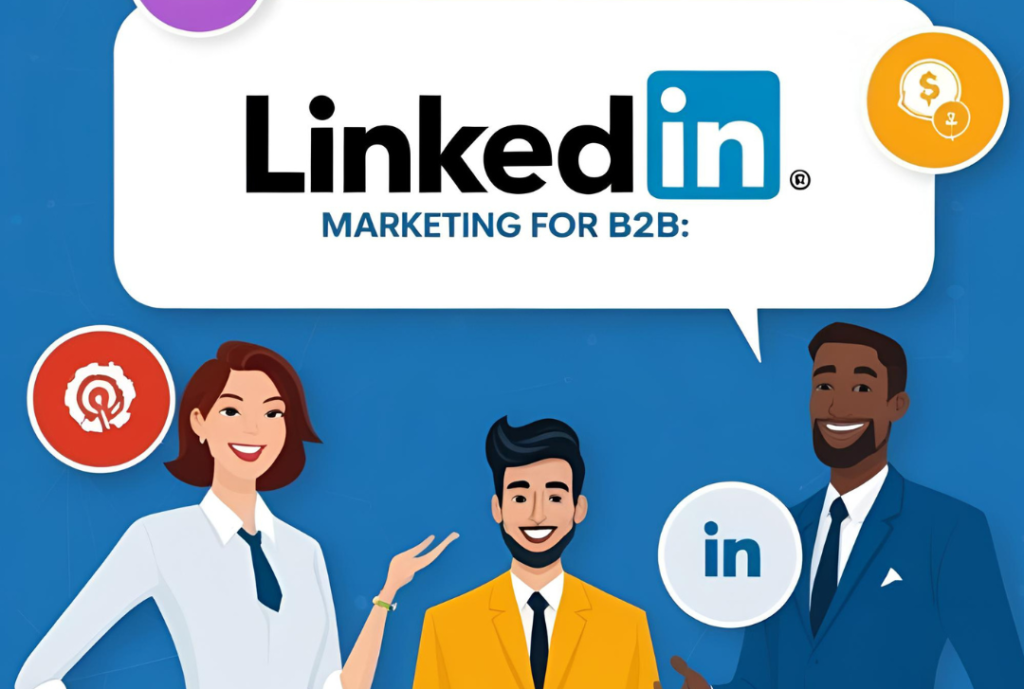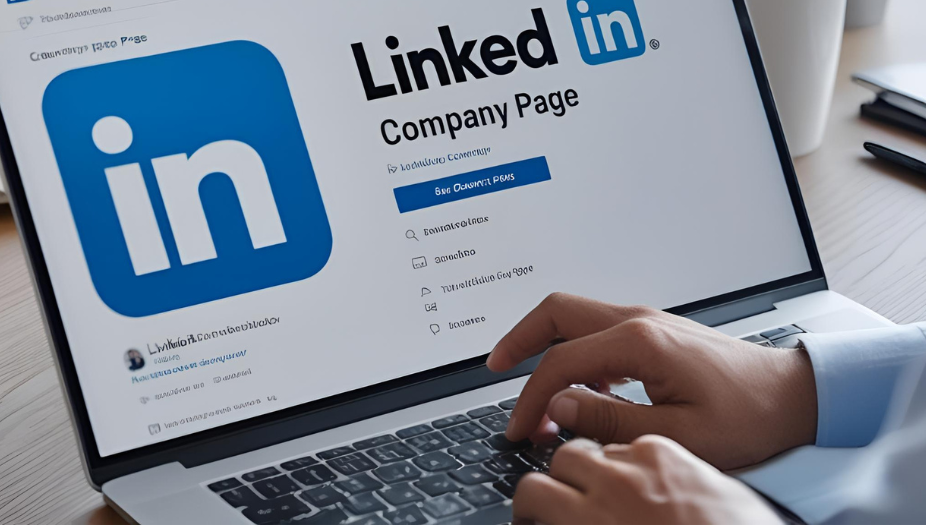It is going to be hard to believe, but LinkedIn has improved over the years, all the way from an ordinary digital resume database to the best place for B2B marketers to create expert networks, create authority in the industry and generate quality leads. A good LinkedIn marketing plan can change the way your business connects in the competitive business environment of today and make it a truly large success. In this ultimate guide, we are going to outline either actionable steps as well as advanced strategies to utilize LinkedIn to its fullest for B2B success.
Introduction
With the digital world being flooded with B2B businesses you are under more pressure than ever in having all your bases covered to reach your end user and that involves standing out from the rest of the competition in the same space as you. With its large network of professionals, LinkedIn offers businesses a different avenue to connect with industry leaders and find potential partners. This guide covers everything from profile optimization and content creation to advertising and analytics if you’re new to LinkedIn marketing or if you’re looking to refine your existing strategy.
Why Does LinkedIn Marketing Matter for B2B Companies.

But LinkedIn is unlike any other social channel — it’s the professional destination where decision-makers, industry experts, and potential partners congregate. LinkedIn has some important benefits for B2B companies:
Direct connection to decision makers: There are millions of professionals on LinkedIn including C-level executives and managers making it an ideal site to connect with those who can impact purchasing decisions.
Brand Credibility: A strong LinkedIn presence builds credibility for your company. You establish trust and authority in your industry by providing valuable insights and engaging content to your potential customers.
Effective Lead Generation: With many social channels users may be casually engaging, but LinkedIn users are usually in a professional mindset. This engagement results in better leads here — better quality leads and leads that are more closely aligned with your business objectives.
Networking Opportunities: While often overlooked as a platform for marketing, LinkedIn allows you to start building long-term relationships with individuals such as peers, partners, and industry experts that could prove to be a valuable asset when it comes to joint ventures or partnerships.
Leveraging these benefits, B2B marketers can craft targeted campaigns that speak to their professional audience yielding higher conversion rates and driving business growth.
What Is LinkedIn Marketing: Explained in Brief
LinkedIn marketing is not just about posting company updates; it’s about developing an all-round strategy that integrates various aspects of engagement. This can be achieved by fine-tuning your profiles, creating quality content, participating in relevant communities, and utilizing their sophisticated advertising tools. Key components include:
Profile and Company Page Optimization These are your frontline players. Also, they have to represent your brand character, values, and your USPs respectively.
Content Writing: Posting articles, updates, and visual content helps in establishing you as a thought leader. Well-written content educates your audience, drives organic engagement.
We do diversion, for example to the network that groups and offers you networking, so you actively connect with potential clients, partners and influencers, so you build a trusted network that can amplify your marketing efforts.
Paid Advertising — LinkedIn offers advanced advertising solutions, including Sponsored Content and InMail, which allow you to target particular demographics, guaranteeing that your message reaches the appropriate audience.
All of these elements work in concert to create a powerful marketing ecosystem that propels B2B success and sustainability.
Optimize Your LinkedIn Profile and Company Page
It is the backbone of your marketing plan: your profile and company page on LinkedIn. Your polished, professional presence on LinkedIn gets you more connections and has also builds trust. Here’s how to get it right:
Personal Profile Optimization

For the photo, use a high resolution professional head shot. Quality headshots capture more engagement on your profile.
Catchy Headline — Job Title is not enough — at least not in LINKEDIN, add your keywords like “LinkedIn Marketing”, a sentence about you.
Excerpt from the above article: Your detailed summary should include your career journey, what you have accomplished, and what makes you different. Don’t forget to talk about your love of LinkedIn marketing and any special aspects you have.
Skill ShowCase: Make sure you list all eveident and relevant skills and get your colleague to endorse you. This adds to its credibility for and visibility in searches for the profile you’ve created.
Advice: Line up peer or client endorsements. Genuine recommendations serve as social proof, and can be vital in cultivating trust.
Company Page Optimization

Branding: Your company page should have your logo and an attractive banner that represents your brand’s personality.
Engaging About Section: Craft a captivating story that communicates your business purpose, principles and the value you provide. Use human-like natural words like “LinkedIn Marketing” quickly.
Frequent Content Updates: Share updates, articles, and industry information regularly; Someone with an active page appears to be trustworthy or an expert in their field to your audience.
Employee Engagement: Ask employees to connect their profiles to the company page. Their engagement can greatly increase your reach.
Call to Action: Use clear CTAs such as “Learn More” or “Contact Us” buttons to lead visitors to engage with your brand.
How To Build A Strong Network On LinkedIn
Your LinkedIn network is one of your most prized assets. With a refined network, you reach more people, and those reach out to you and vice versa becomes credible and real. Here are some tips to help you create and foster your network:
Targeted Connections: Prioritize networking with key players in your industry. Send tailored connection requests that clarify why you’re contacting them.
Actively Engage: Once connected, engage with your network by commenting on posts, sharing insights, and participating in discussions. Relationships are built on meaningful interactions.
Leverage Groups: LinkedIn groups are goldmines of industry-specific discussions. You can put yourself on the map as someone to turn to be joining groups that are specific to your profession, and sharing good, information in there.
Share Content Regularly — Stare at Keeping your network informed, educated and entertained Your audience is better able to stay engaged with the usage of diverse formats like articles, videos, infographics, etc.
Organize Virtual Events: Leverage LinkedIn Live or conduct webinars to engage your network in real-time. These events can also add to your credibility and facilitate dynamic, two-way engagement.
How to Come up with a Winning Content Strategy
Content is the core of every effective Linked In marketing strategy. It’s your main vehicle for sharing your expertise and engaging your audience. A good content strategy on LinkedIn marketing should include:
Short-Form Updates: Frequent posts sharing insights, questions, or tips help build engagement and keep you top of mind with your audience.
Image content: Use images, infographics, and videos to break up the text and grab attention. Visual content drives higher engagement and is more shareable.
Success Stories and Case Studies: Showcase real-life examples that demonstrate how yourLinkedIn marketing strategies have delivered tangible results. Because what are these stories if not testimonials to your expertise.
Polls, surveys, and Q&A sessions engage the audience and give you helpful feedback that can drive your future content.
Well-planned content strategy does more than just establish your thought leadership; it creates worthy engagement that can lead the prospects into leads.
Using LinkedIn Ads For B2B Marketing
Organic strategies are key however, if you are serious about utilising LinkedIn as a business channel, paid advertising helps expedite your reach and deep dive into the specific cohorts of your audience. Here’s how to leverage LinkedIn’s advertising options:
Sponsored Content — Share your top-performing posts directly in the LinkedIn feed. This format works well to increase the visibility of articles, videos, or success stories.
Sponsored InMail: Send personalized messages directly to your target audience’s inbox. (Sponsored InMail This is especially relevant for webinars, events, or exclusive offers.
Text Ads: Inexpensive advertising on sidebar, which can bring targeted traffic to the landing pages or your website.
Dynamic Ads: Use customized ads that tailor to the profile of each viewer, making them more relevant and engaging.
Lead Gen Forms: Streamline the process of collecting leads with forms built right into your ads, making it easy for prospects to send you their information without ever leaving LinkedIn.
Evaluate and Improve Your LinkedIn Marketing
The marketing end-goal achieved through measurement, analysis, and adaptation is what leads to success in LinkedIn Ads strategy. By defining KPIs and using LinkedIn Analytics, you can track performance and refine your approach.
Engagement Metrics: Track likes, shares, comments, and overall engagement on posts. When you have high levels of engagement, it means that you create amazing content for your audience.”
Lead Generation: Monitor the quantity and quality of leads obtained from your LinkedIn efforts, whether they come from organic posts or paid campaigns.
Click-Through Rates (CTR): Whether for content or ads, assess how many of your viewers are clicking through to your website or landing pages.
Conversion Rates: Measure how well your LinkedIn traffic turns into real business results like inquiries, sign-ups, or sales.
Audience/Network growth: Monitoring the increase of your connections and followers over time Because an expanding network is an expanding influence or reach.
Check your data regularly and adapt your content, targeting, and messaging accordingly to keep achieving the best results. Connecting third-party analytics tools can also give you greater visibility into how your LinkedIn efforts feed into business results.
Conclusion
This is how leveraging LinkedIn marketing can skyrocket your B2B growth. By taking the time to create a thorough profile and company page, build an appropriate network, create engaging content, and utilize advanced advertising tools, you can establish your brand as an industry thought leader and generate quality leads.While LinkedIn is a powerful platform for B2B lead generation, it’s equally important to strengthen your overall SEO strategy to drive long-term success. Learn more about the importance of backlinks in SEO and how they can significantly boost your website’s visibility.
